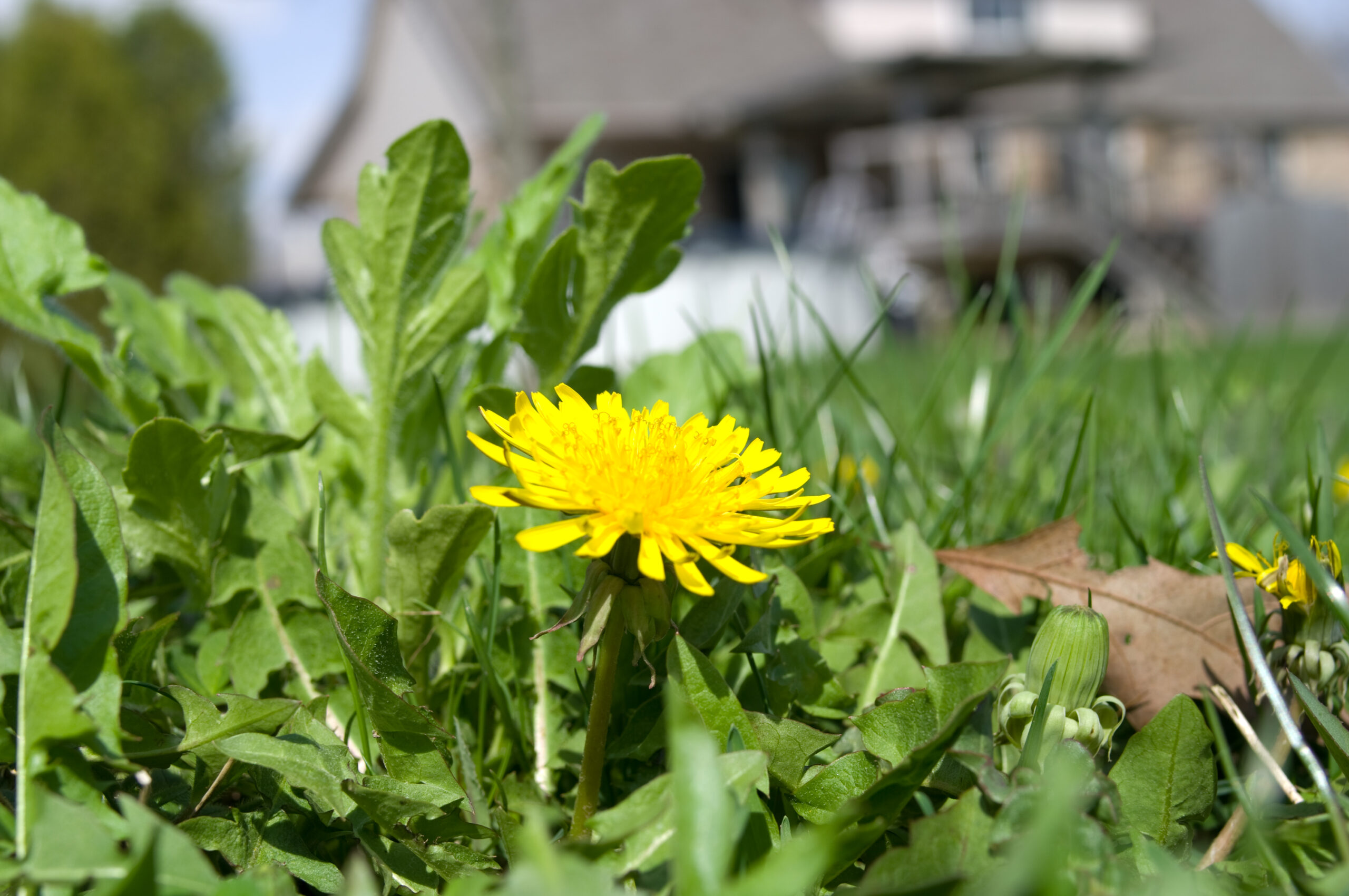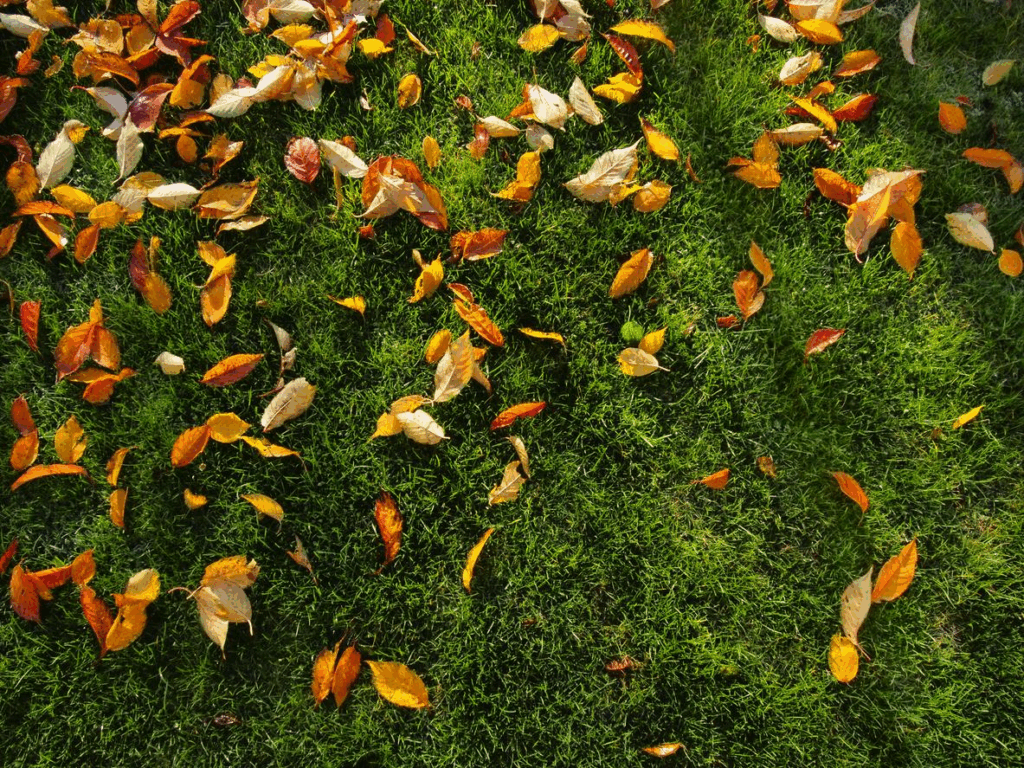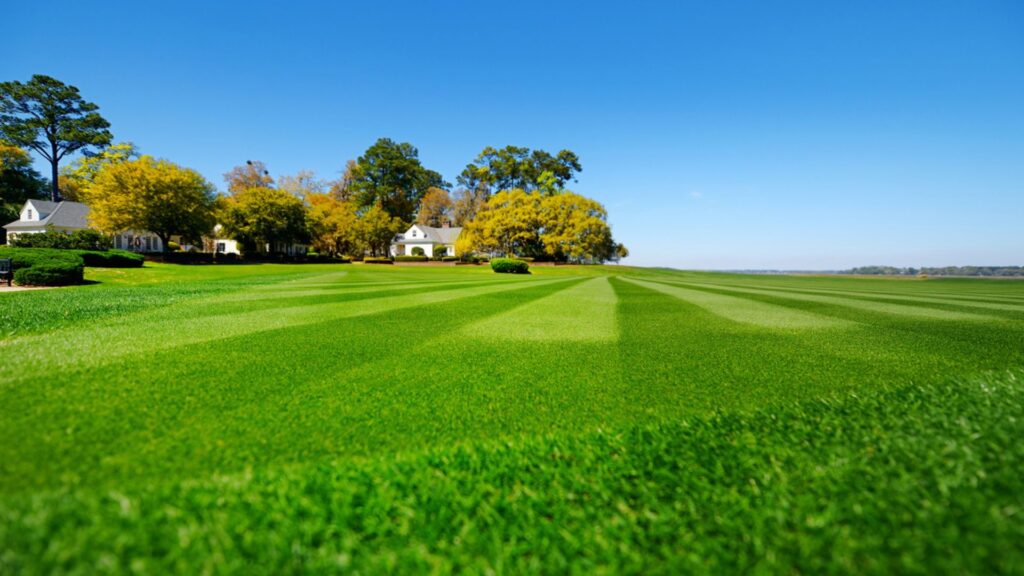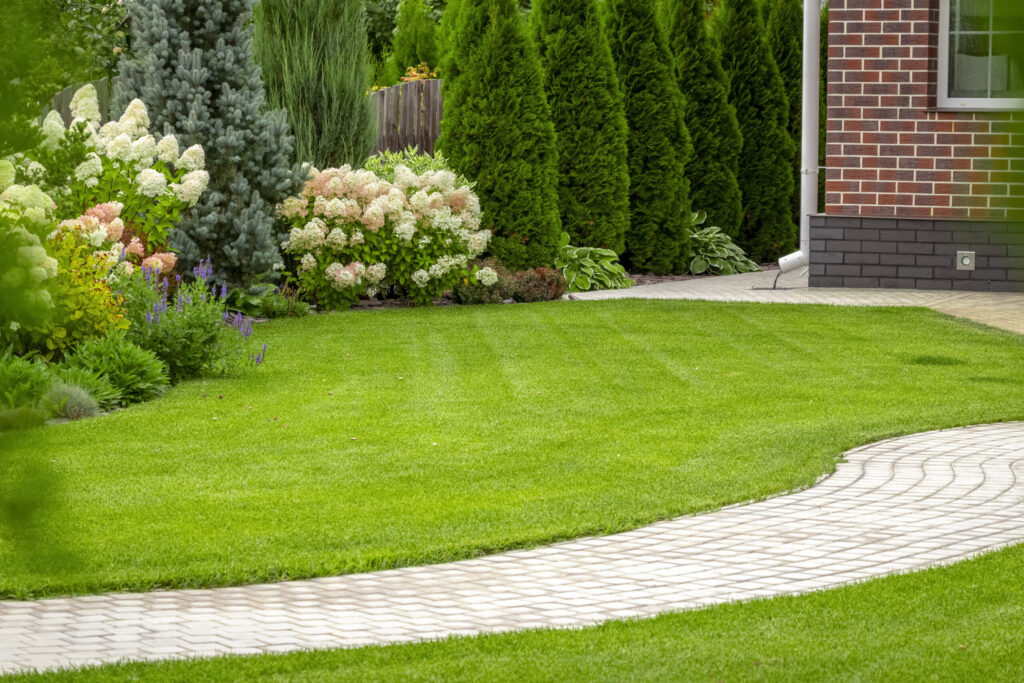Maintaining a lush, green lawn in Cherry Hill, NJ can be challenging, especially when weeds threaten to overtake your grass. These unwelcome intruders not only mar the appearance of your yard but also compete with your grass for nutrients, water, and sunlight.
The key to a beautiful lawn lies in getting rid of these weeds without harming your grass. At Lawn Squad in Cherry Hill, we understand the importance of safe and effective weed control methods tailored to the specific needs of Cherry Hill residents.
Cherry Hill’s Weed Landscape
If you want your lawn in Cherry Hill to look its best, you’ll need to watch out for weeds that love our local weather. Crabgrass and dandelions are a couple of the usual troublemakers. They don’t just make your yard look messy — they also steal water, sunlight, and nutrients your grass needs. Spotting these weeds early makes controlling them a whole lot easier.
Crabgrass grows every year from new seeds and starts sprouting in the spring. If not stopped, it spreads fast and takes over the lawn. Dandelions have bright yellow flowers and come back every year because their roots grow deep into the ground. Pulling them out can be tricky since they can grow back if you leave part of the root behind. Stopping these weeds before they spread helps keep your grass strong and healthy.
Early Season Weed Control
To keep your Cherry Hill lawn healthy, start removing weeds early in the season. Using weed preventers before weeds appear stops their seeds from growing. This helps keep weeds from spreading and stealing water and nutrients from your grass. From the middle to the end of March, when the soil starts warming up, is a good time to apply these treatments. When you do so, you can halt weeds like crabgrass before they become a problem.
Selecting the Right Pre-Emergent Herbicide
Picking a good pre-emergent herbicide helps you stop weeds before they even start growing. Many people use products with ingredients like prodiamine or dithiopyr to prevent weeds like crabgrass from sprouting.
Always check the label carefully to make sure it’s safe for your specific type of grass (such as Kentucky bluegrass, tall fescue, etc.), and use the correct amount. These herbicides create a thin layer in the dirt that keeps weed seeds from coming up. Timing matters, so putting them down at the right moment makes sure they do their job well.
Proper Application Techniques
To get the best results without hurting your grass, pre-emergent herbicides need to be applied the right way. If you’re using a granular type, spread it evenly over your lawn with a lawn spreader. If you’re using a liquid type, a sprayer helps cover the area evenly. After applying the herbicide, water the lawn lightly to help it soak into the soil. Avoid heavy watering right afterward, as too much water can wash it away before it starts working.
Monitoring Soil Temperatures
Watching the soil temperature helps you know when to put down pre-emergent herbicides. Crabgrass seeds begin to grow when the soil reaches 55°F to 60°F. A soil thermometer can help you check the temperature. Applying herbicide at the right time makes it more effective in stopping weeds before they start.
Integrating Fertilization With Weed Control
Using fertilizer and weed killer together can help your lawn grow strong and healthy. A yard that is well-fed is better able to fight off weeds and heal from the damage that herbicides do. A balanced, slow-release fertilizer that gives grass important nutrients over time can help it grow steadily without speeding up the top growth too much. This method not only makes your grass healthy overall, but it also makes it better able to fight off weeds in the future.
Addressing Existing Weed Infestations
Post-emergent herbicides can help get rid of weeds that have already started to grow in your yard without hurting the grass. These herbicides are made to kill weeds that have already started to grow.
This stops them from spreading and taking away food, water, and sunlight from your grass. Choosing the right product is key because different herbicides work on different types of weeds. Some are better for broadleaf weeds like dandelions, while others focus on grassy weeds like crabgrass.
Reading labels carefully helps make sure you are applying the herbicide correctly. Some products require mixing with water, while others come ready to use. The best time to apply post-emergent herbicides is when weeds are actively growing, usually in warm weather with enough moisture in the soil.
Applying herbicides in extreme heat or right before rain can reduce effectiveness. Spot-treating weeds instead of covering the entire lawn can help protect healthy grass while effectively treating problem areas. Treating weeds the right way helps you remove them while keeping your grass safe and healthy.
Home Practices to Support Weed Control
In addition to chemical treatments, trying new home practices can significantly enhance your lawn’s ability to resist weed infestations. Regularly cutting your grass at the right height for its type can help it grow densely and block out weed seeds.
Proper watering methods, like watering deeply and not too often, help roots grow deep, which makes your grass stronger against weeds. Aerating your lawn to alleviate soil compaction and overseeding thin areas can also improve turf density, reducing spaces where weeds can establish themselves.
Environmental Considerations
Herbicides can do a good job of controlling weeds, but it’s important to use them carefully to protect the environment. Be careful not to spray them near water, and avoid using them on windy days when they could blow into other areas.
If you’d like to use fewer chemicals, pulling weeds by hand or adding mulch can also help. Combining these methods gives you a healthy lawn and protects the environment around your home.
Staying Consistent With Lawn Care
Consistency is key when it comes to lawn care and weed management. Establishing and adhering to a regular maintenance schedule that includes mowing, watering, fertilizing, and monitoring for weeds can prevent small issues from becoming major problems.
Educating Yourself About Local Weed Species
Knowing which weeds are common in your town helps you tackle them before they take over your lawn. Different weeds require different control methods, and some weeds can spread quickly if you don’t treat them properly.
Learning to recognize weeds like crabgrass, dandelions, and clover early allows you to choose the best approach. It might be pulling them out by hand, using targeted herbicides, or adjusting lawn care practices to prevent them from growing.
Checking online resources, such as gardening websites from universities or lawn care discussion groups, can help you stay informed about which weeds are popping up each season and what works best to control them.
If you pay attention to when certain weeds usually grow, you can take action early when it matters most. Plus, learning more about the pests bothering your lawn can help you create a clear plan to keep your grass healthy and green all season long.
Consulting Lawn Care Professionals
Managing weed control can be a complex task, especially when dealing with persistent infestations. Talking to local lawn care experts can help you better care for your lawn. They can test your soil, suggest the right weed treatments, and set up a plan that works best to keep your grass healthy and free from weeds.
Weed Proof Your Lawn Today
Regular mowing, proper watering, and fertilization (where appropriate) can strengthen your grass, making it more resilient to invasions.
If you need help, contact our team at Lawn Squad. Call us today to schedule a consultation and take the first step toward a healthier lawn.





